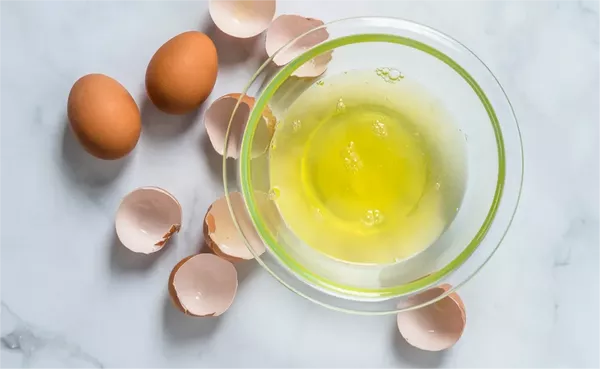Eggs are a common ingredient in many recipes. They add moisture, act as a binding agent, and help with leavening. However, there are times when you might not have eggs on hand, or you may be avoiding them for dietary reasons. Luckily, there are several substitutes you can use in your cooking. This article will explore various egg substitutes, their uses, and how to incorporate them into your recipes.
Why Substitute Eggs?
There are several reasons to substitute eggs in cooking:
Dietary Restrictions: Some people are allergic to eggs or follow a vegan diet.
Availability: You might run out of eggs while cooking.
Health Concerns: Some individuals prefer to reduce cholesterol or calorie intake.
Understanding why you might need a substitute will help you choose the right one for your dish.
SEE ALSO: How Do You Make a Mug Cake Easy?
Common Egg Functions in Recipes
Before we dive into substitutes, let’s explore the functions of eggs in cooking:
Binding: Eggs help hold ingredients together, especially in baked goods.
Leavening: Eggs add volume and lightness to dishes, like soufflés and cakes.
Moisture: They provide moisture, ensuring the final product is not dry.
Richness: Eggs contribute to the overall flavor and richness of dishes.
Color and Shine: Eggs give a beautiful golden color to baked goods and can create a shiny finish on pastries.
Best Egg Substitutes for Baking
When it comes to baking, the right substitute can vary based on the function of the egg. Here are some of the best options:
1. Applesauce
How to Use: Use 1/4 cup of unsweetened applesauce to replace one egg.
Function: Applesauce adds moisture and sweetness. It works best in cakes, muffins, and quick breads.
Note: Reduce other liquids in the recipe slightly to avoid excess moisture.
2. Mashed Banana
How to Use: Use 1/4 cup of mashed banana to replace one egg.
Function: Mashed banana provides moisture and sweetness, similar to applesauce.
Note: This substitute works well in baked goods where a banana flavor is desired, such as banana bread or pancakes.
3. Yogurt
How to Use: Use 1/4 cup of plain yogurt to replace one egg.
Function: Yogurt adds moisture and a bit of acidity, which helps with leavening.
Note: This works well in cakes and muffins, providing a rich texture.
4. Flaxseed Meal
How to Use: Mix 1 tablespoon of flaxseed meal with 2.5 tablespoons of water. Let it sit for 5-10 minutes to thicken.
Function: Flaxseed meal acts as a binding agent and provides a nutty flavor.
Note: This substitute is ideal for cookies, pancakes, and breads.
5. Chia Seeds
How to Use: Mix 1 tablespoon of chia seeds with 2.5 tablespoons of water. Allow it to sit until it forms a gel-like consistency.
Function: Chia seeds also act as a binder and add nutrition.
Note: Use this in recipes where a slight crunch is acceptable, such as muffins or energy bars.
6. Silken Tofu
How to Use: Blend 1/4 cup of silken tofu until smooth to replace one egg.
Function: Tofu provides moisture and creaminess, perfect for dense baked goods.
Note: This works well in brownies and cakes, but may alter the texture slightly.
7. Aquafaba
How to Use: Use 3 tablespoons of aquafaba (the liquid from canned chickpeas) to replace one egg.
Function: Aquafaba mimics egg whites, making it great for meringues and mousses.
Note: It whips up well and can create light and airy textures.
Best Egg Substitutes for Cooking
Eggs are often used in savory dishes as well. Here are some substitutes for cooking:
1. Cornstarch
How to Use: Mix 2 tablespoons of cornstarch with 3 tablespoons of water to replace one egg.
Function: Cornstarch acts as a binder and thickener, ideal for sauces and soups.
Note: It may not provide the same richness as an egg.
2. Baking Powder and Oil
How to Use: Mix 1 tablespoon of baking powder with 1 tablespoon of oil and 2 tablespoons of water to replace one egg.
Function: This combination helps with leavening and binding.
Note: Use in baked goods where you need a light texture.
3. Nutritional Yeast
How to Use: Use 1 tablespoon of nutritional yeast as a flavor enhancer in place of eggs.
Function: Nutritional yeast adds a cheesy, savory flavor and can help with binding in some recipes.
Note: Use it in savory dishes, like casseroles and quiches.
4. Buttermilk
How to Use: Use 1/4 cup of buttermilk to replace one egg.
Function: Buttermilk adds moisture and acidity.
Note: This is excellent for pancakes and quick breads.
5. Vegetable Oil
How to Use: Use 2 tablespoons of vegetable oil to replace one egg in recipes.
Function: This adds fat and moisture, but won’t provide binding.
Note: Use it in recipes where binding isn’t critical.
Choosing the Right Substitute for Your Recipe
When selecting an egg substitute, consider the following factors:
Recipe Type: Identify if the egg’s primary function is binding, leavening, or moisture.
Flavor Profile: Choose a substitute that complements the dish’s flavor.
Texture: Some substitutes may change the final texture of the dish.
Tips for Using Egg Substitutes
Experiment: Different substitutes work better for different recipes. Don’t hesitate to try several options to find your favorite.
Adjust Baking Times: Some substitutes may alter the cooking time. Keep an eye on your dish as it cooks.
Start Small: If you’re new to using substitutes, start with recipes that are forgiving. Muffins or quick breads are great choices.
Conclusion
Eggs play a significant role in many recipes, but substitutes can effectively take their place. Whether you’re avoiding eggs for dietary reasons or simply running out, there are plenty of options available. From fruits like applesauce and bananas to pantry staples like cornstarch and baking powder, these substitutes can help you create delicious dishes without sacrificing taste or texture. Experiment with different options, and you may find a new favorite ingredient along the way. Happy cooking!
Related topics:



























